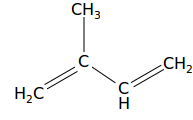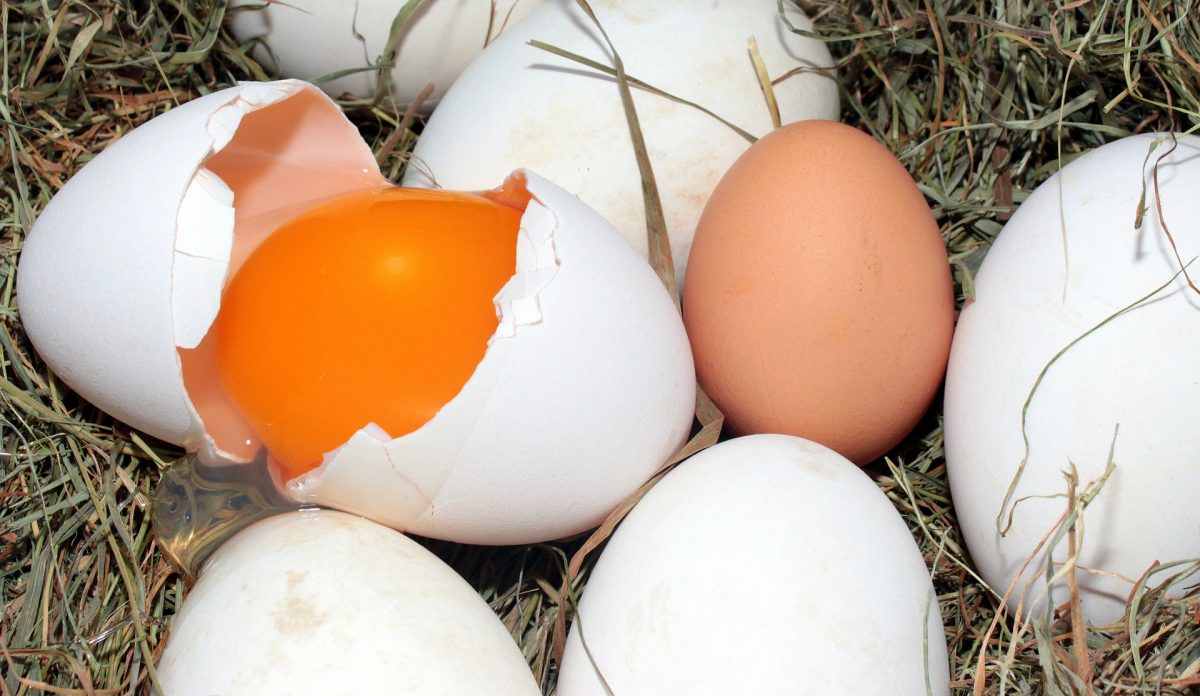
Share this post!
Welcome back to the next installment of the nutrients of the rainbow series. In the first blog, we learned why plants adapted to have bright colors, how hue angles are calculated, and the antioxidant nutrients responsible for the color red.
Moving clockwise along the color wheel we land at nutrients that appear orange or yellow. The nutrients responsible for these colors are primarily carotenoids, of which we learned about the lycopene in the red segment, and is taught in holistic nutrition courses at Nutrition Therapy Institute. Next, we’ll explore more carotenoids, such as beta-carotene and xanthophylls, and also the quintessential yellow compound – curcumin.
Before we dive into more carotenoids, let’s take a quick detour to learn about the chemical building blocks they are made of.
Isoprene
Isoprene is a unit of 5 carbon atoms arranged in a specific pattern, which includes two carbon to carbon double bonds alternating in a chain with a fifth carbon branching off.

An isoprenoid compound is one that uses two to thousands of isoprene units attached in sequence. Terpene is a similar term, often used to describe derivatives of isoprenoid structures which may be cyclic or in a straight chain. Isoprenoids commonly found in plants include:
- Monoterpenes – 2 isoprene units (10 carbons)
- Sesquiterpenes – 3 isoprene units (15 carbons)
- Diterpenes – 4 isoprene units (20 carbons)
- Triterpenes – 6 isoprene units (30 carbons)
- Tetraterpenes – 8 isoprene units (40 carbons)
You may recognize these categories of compounds from your favorite herbal constituents, as terpenes are often responsible for the fragrances, flavors, anti-inflammatory and antimicrobial properties of various plants. In fact, many nutrients contain isoprenoid components to some degree, including the fat-soluble vitamins A, D, E, and K, chlorophyll, alkaloids, ubiquinones (like coenzyme Q10), and carotenoids.
Carotenoids are tetraterpenes, containing 8 isoprene units or 40 carbons. Many isoprene units in sequence creates a series of conjugated double bonds, which is the property that allows for the presence of color. Carotenoids appear yellow, orange, or red because these conjugated bonds absorb wavelengths that correspond to violet, blue, and green.
Isoprene building blocks are assembled in many different quantities and configurations. Adding functional groups to the structure, such as double bonded oxygen or hydroxyl groups, produces a seriously wide range of diversity and characteristics of these fascinating nutrients.
One well known characteristic of some carotenoids is that they are a precursor to vitamin A, a nutrient that must be obtained in the diet.
Provitamin A Carotenoids
One way to get vitamin A in the diet is to consume it in its preformed state, retinol, which is obtained from animal foods. The other way to get vitamin A in the diet is to consume its carotenoid precursors, aka provitamin A, and then convert it to retinol on your own (that’s how it got in those animal foods, after all).
Provitamin A carotenoids include:
- Beta-carotene (this is the major one)
- Alpha-carotene
- Beta-cryptoxanthin
The conversion of provitamin A to the real deal is accomplished by enzymes in the intestines or the liver. Factors that affect conversion efficiency include individual characteristics, like genetics and vitamin A status, and the type of plant it comes from and whether it was consumed with dietary fat. Dietary fat increases the absorption of carotenoids, as they are fat-soluble nutrients.
Though there is a high degree of variability surrounding the conversion efficiency of provitamin A carotenoids, the general rule of thumb is that it takes about 12 mcg of beta-carotene or 24 mcg of alpha-carotene or beta-cryptoxanthin to equal 1 mcg of retinol, or 1 retinol activity equivalent (RAE). The RDA for vitamin A is 700 RAE for the average adult.
Food sources of beta-carotene and other provitamin A carotenoids include orange and yellow fruits and vegetables and dark leafy greens, though their presence is masked by chlorophyll in these foods.

Foods Rich in Provitamin A:
- Sweet potato
- Carrot
- Red pepper
- Papaya
- Peach
- Chili powder
- Paprika
- Pumpkin
- Butternut squash
- Spinach
- Kale
- Collard greens
Carotenoids like these are an important source of vitamin A, which is necessary for eye health and immune function, and they are also antioxidants. Next, we’ll dive a little deeper into eye health with a different class of carotenoids with the coolest name ever: xanthophylls.
RECIPE >>> Roasted Peach, Pepper, and Pecan Salsa
Xanthophylls
Carotenoids come in two general types: the hydrocarbon variety, which includes the carotenes, and xanthophylls, which include oxygen in their structure.
Like the other carotenoids, xanthophylls contain repeated isoprene units, totaling 40 carbons with lots of conjugated double bonds. The addition of oxygen, typically in a hydroxyl group (-OH), tends to change the wavelength of light they absorb, making xanthophylls appear more yellow in color than the carotenes, which are typically orange.
Examples of xanthophylls include:
- Lutein
- Zeaxanthin
- Astaxanthin
- Neoxanthin
- Violaxanthin
- Flavoxanthin
- Beta-cryptoxanthin (the only xanthophyll that is provitamin A)
Again, thanks to the conjugated double bonds, xanthophylls are antioxidants, which are able to neutralize free radicals. (A major theme among the nutrients of the rainbow!) In addition, certain xanthophylls, lutein and zeaxanthin, have a particular affinity for the tissues of the eye and they play a major role in vision health.
Lutein and Zeaxanthin and Eye Health
Somehow after being absorbed from the diet, lutein and zeaxanthin set up camp in the retina. Together with meso-zeaxanthin, a metabolite of lutein, they form what is known as macular pigment. Macular pigment protects the eyes from the damaging effects of light by absorbing blue light, which has a short wavelength and high energy.
Too much blue light exposure oxidizes the tissues of the eye and can result in impairments of central or peripheral vision. A common manifestation of vision decline as a result of decreased macular pigment and increased oxidation is age-related macular degeneration (AMD), the leading cause of blindness in older people.
Nutritional sources of lutein and zeaxanthin are similar to the other carotenoids: orange and yellow fruits and vegetables and dark leafy greens. Even though they are green and not orange, leafy green vegetables tend to have a much higher concentration of xanthophylls. For example, kale has about 20 times more lutein per gram than carrots!

Animal foods, such as egg yolks, also contain a good deal of this nutrient. It is important to note that the xanthophyll content of animal foods comes from the inclusion of these nutrients in their diets. For this reason, lutein is often added to chicken feed to intensify the yellow-orange color of their yolks.
Foods rich in Lutein and Zeaxanthin:
- Kale
- Spinach
- Parsley
- Peas
- Squash
- Brussels sprouts
- Pistachios
- Egg yolks
- Broccoli
- Pumpkin
- Cantaloupe
- Corn
- Orange
Bioavailability of xanthophylls, like all fat-soluble nutrients, increases in the presence of dietary fat. Egg yolks impart a greater availability of lutein and zeaxanthin as fat naturally occurs with this food.
Cooking with heat tends to decrease carotenoid content of plant foods, yet improves their bioavailability. You win some, you lose some, as they say.
Moving on to a nutrient that leaves its yellow mark (literally) on everything it touches, let’s briefly explore the incredible nutritional value of curcumin.
Curcumin
Found in turmeric, curcumin is a potent antioxidant that it extensively studied for a variety of health benefits. Taking a look at its structure, it’s not hard to see why it is brightly yellow. It has two phenyl rings joined by alternating double bonds (i.e. a whole lotta conjugation) with plenty of oxygens sprinkled in.

Curcumin has antioxidant, anti-inflammatory, antimicrobial, and anticancer properties. It has been studied for its nutritional value in many health conditions ranging from metabolic, arthritis, pain, anxiety, and exercise recovery.
This nutrient is notoriously not very bioavailable, owing to its poor absorption coupled with rapid metabolism and excretion. However, its absorption can be increased by consuming it with fat and/or black pepper, which contains piperine, a compound that interferes with the body’s system for metabolizing it.
Recipes for More Orange and Yellow in Your Life
The most important thing to remember when consuming the foods on the lists in this article is that they will be better absorbed when they are consumed with dietary fat. That means, drizzle your salads with an olive-oil vinaigrette, lightly steam your greens with coconut oil, and douse your sweet potatoes with a healthy dollop of butter. Add avocados, nuts, and seeds to your meals. Or, you can also try the turmeric paste recipe below.
Turmeric Paste
Ingredients:
- ½ cup ground turmeric
- 1 ½ tsp black pepper
- 1 tbsp cinnamon
- 1 tsp ginger powder
- ½ cup coconut oil
- 1 ¾ cup water
- ¼ cup raw honey
Directions: Mix all ingredients (except honey) together in a saucepan over medium heat. Whisk together while simmering gently for about 10 to 15 minutes. Remove from heat and allow to cool for another 10 minutes. Whisk in honey. Store in a glass jar in the refrigerator for up to 3 months.
Add a spoonful (or two) to smoothies, lattes, and golden milk. This is delicious when mixed with vanilla ice cream.
Squashed Stuffed with Pears and Wild Rice is another great recipe to work orange and yellow nutrients into your diet!
I hope you enjoyed the orange and yellow segment of the rainbow series. Next up: green. Until then, get all the colors of the rainbow on your plate!
To learn more about holistic nutrition, check out NTI’s holistic nutrition courses in the Nutrition Therapist Master Program.
_________________________________________________________________________________________________________________
About the author
Karyn Lane is working towards her holistic nutrition certification in NTI’s Nutrition Therapist Master Program. She finds her chemistry degree a useful tool in her study of holistic nutrition and loves to treat herself as a laboratory for new recipes and cooking techniques. You can follow her on Instagram @feel.alive.nourishment.
About Nutrition Therapy Institute’s Holistic Nutrition Certification
Nutrition Therapy Institute (NTI) is a leader in holistic nutrition education. Since 1999, NTI has provided students with the highest quality in nutrition training by offering comprehensive holistic nutrition courses online and in-person to help students achieve thriving careers as holistic nutrition therapists in the field of holistic nutrition counseling and wellness. Interested in starting our holistic nutrition courses and earning your holistic nutrition certification? Attend an informational webinar to learn more by signing up HERE.
Image:
Image by InspiredImages is free for use by Pixabay
Image by 94peter is licensed under CC BY-SA 3.0
Image by congerdesign from Pixabay
Image by Myriams-Fotos from Pixabay
Image by NadirSH is licensed under CC BY-SA 3.0
Share this post!




















